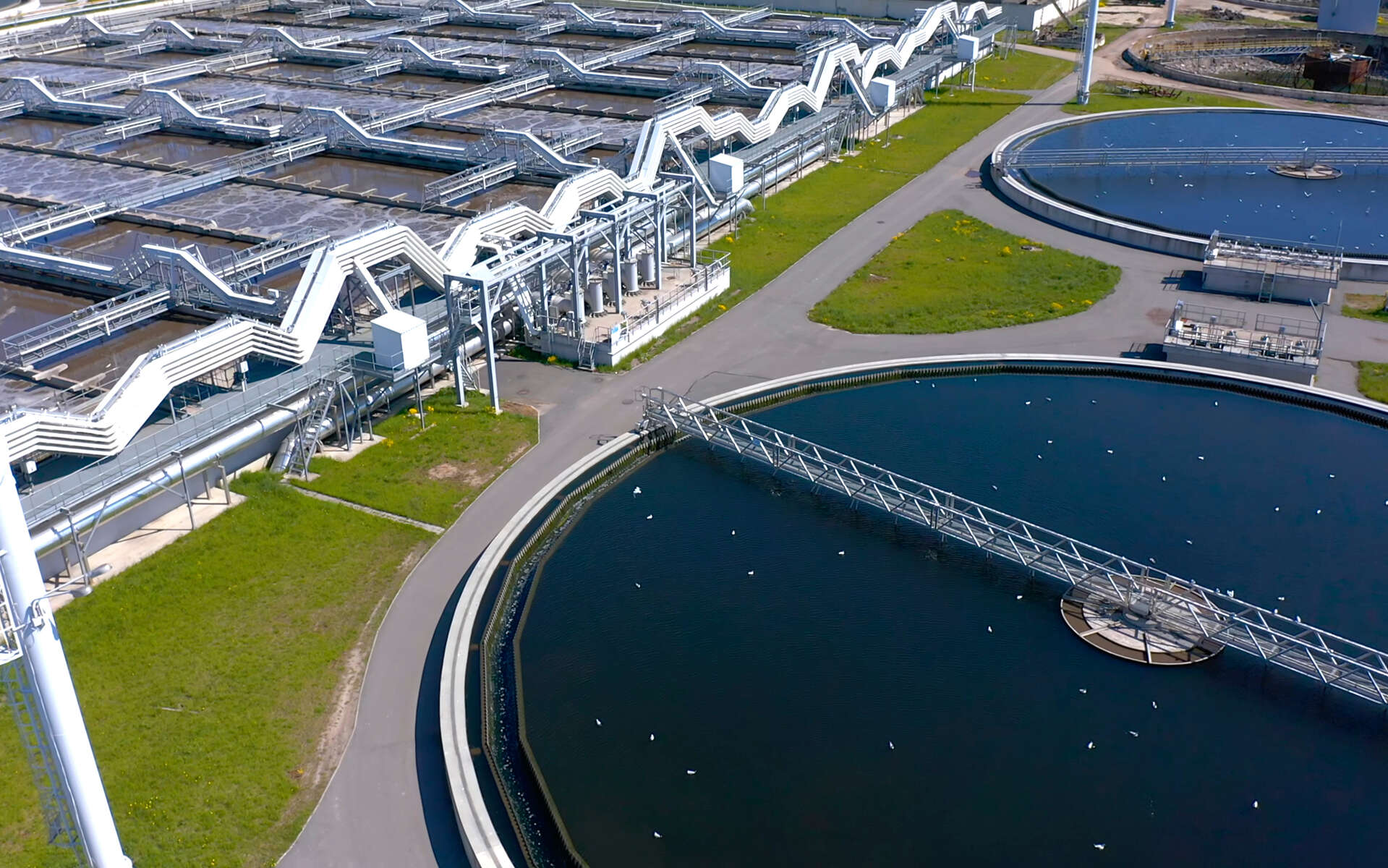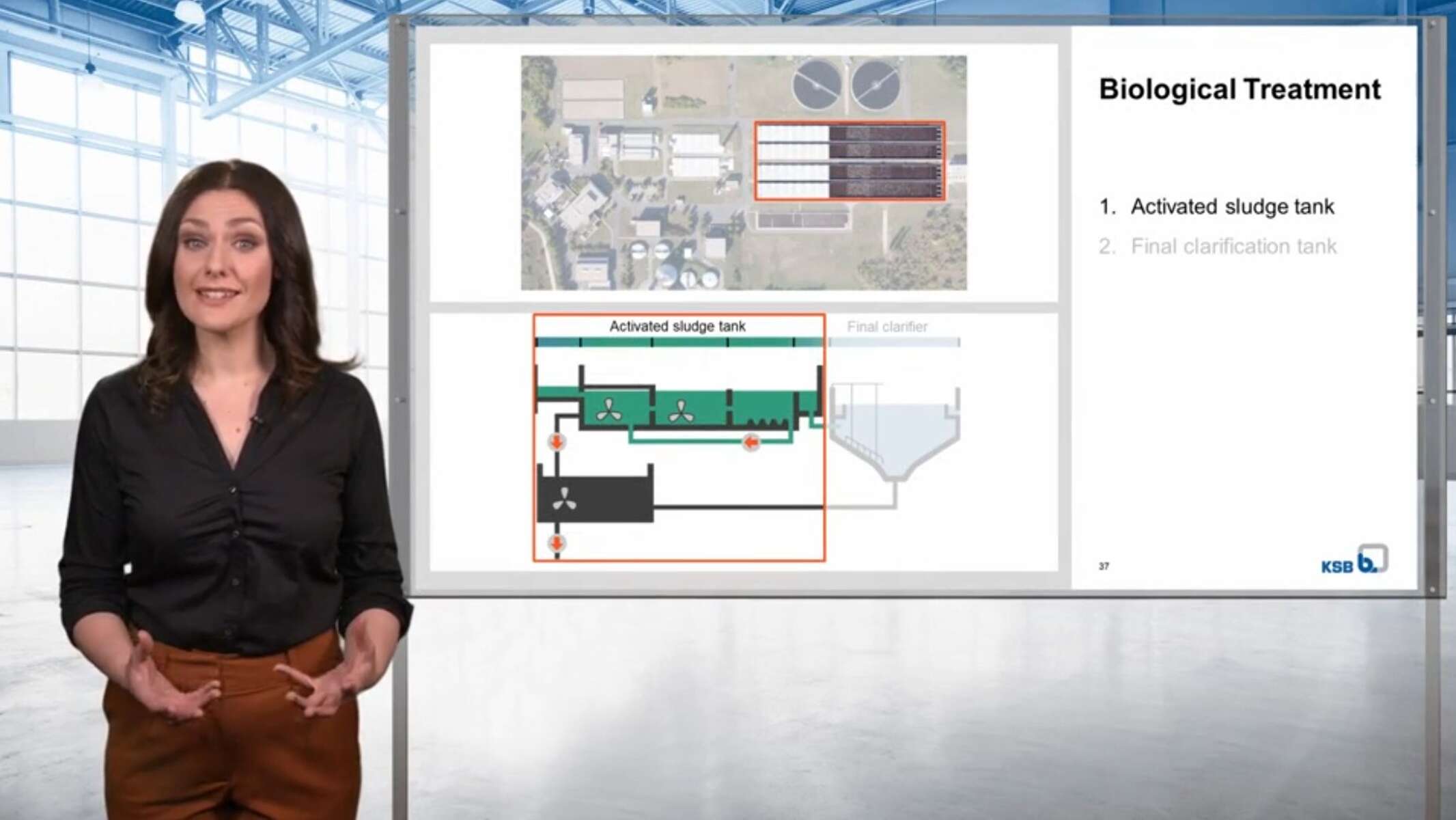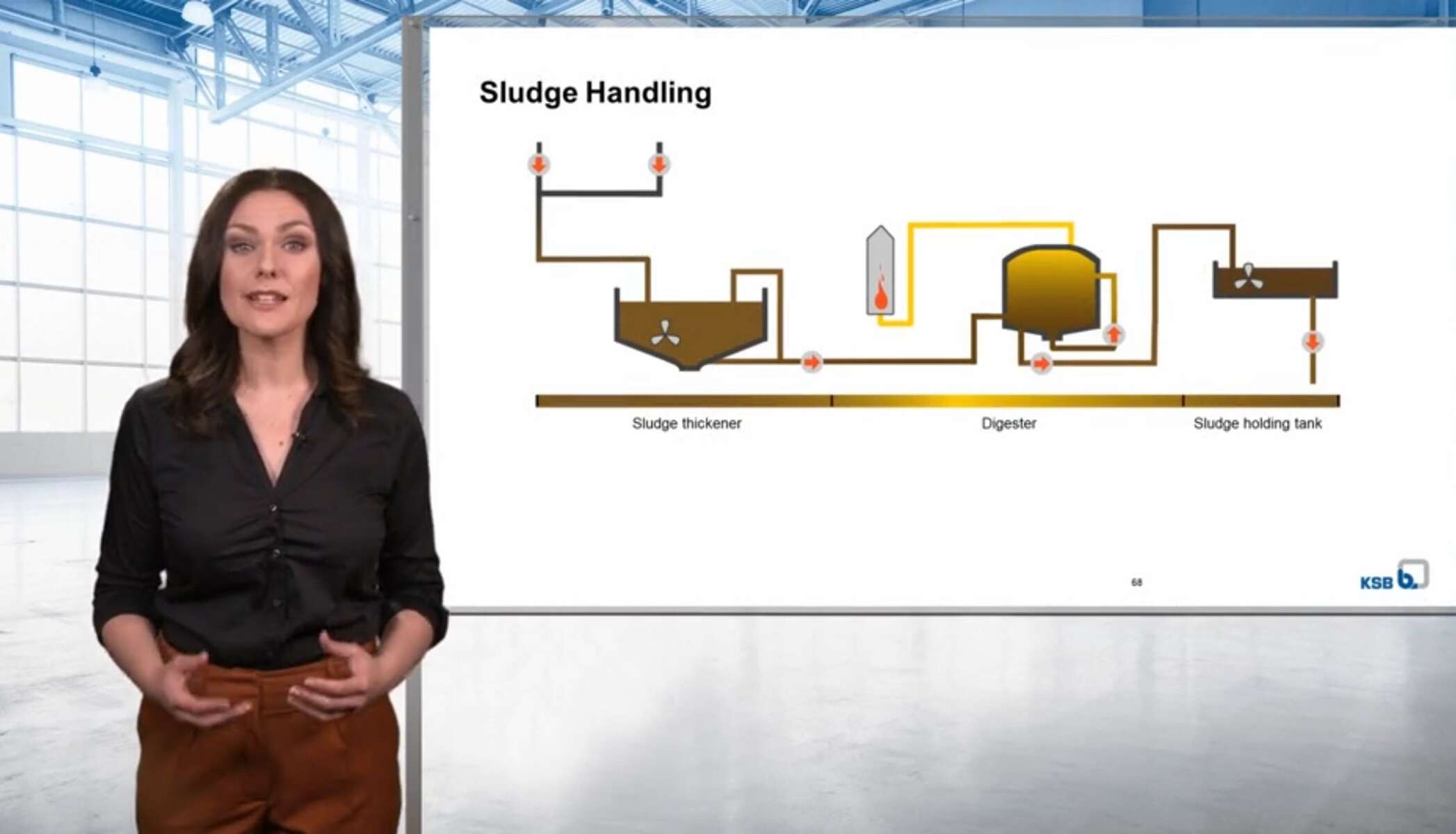
Processes in Waste Water Treatment Plants
Today, thanks to the German chemical engineer and hygiene pioneer Max von Pettenkofer, we are in the position to offer treated water in the best quality.
How to turn waste water into clean water
Typically, the waste water originates from domestic, municipal or industrial use as well as from rainfall. It contains dissolved and undissolved substances, which can be of organic or inorganic origin. In some cases, waste water also contains heavy metals and salts, which are dissolved in the water. In today´s state of the art waste water treatment plants, the waste water has to pass through many different stages like mechanical, biological and sludge treatment.

Stage 2: Biological treatment
The next stage is the biological treatment, here micro-organisms – anaerobic, anoxic and aerobic bacteria – serve to decompose dissolved substances contained in the waste water. The process is divided into 2 steps:
- Denitrification and nitrification phase
- Final clarification
Stage 2: Biological treatment
The next stage is the biological treatment, here micro-organisms – anaerobic, anoxic and aerobic bacteria – serve to decompose dissolved substances contained in the waste water. The process is divided into 2 steps:
- Denitrification and nitrification phase
- Final clarification

Stage 3: Sludge treatment
The last stage is the sludge treatment. This sludge comprises primary sludge, secondary sludge and grease. Primary sludge is mainly composed of faeces. The terms secondary or excess sludge define excess micro-organisms that are removed from the treated water after the final clarification stage. The different types of sludge can either be treated together or separately.
Stage 3: Sludge treatment
The last stage is the sludge treatment. This sludge comprises primary sludge, secondary sludge and grease. Primary sludge is mainly composed of faeces. The terms secondary or excess sludge define excess micro-organisms that are removed from the treated water after the final clarification stage. The different types of sludge can either be treated together or separately.
AmaProp
Horizontal submersible mixer with self-cleaning ECB propeller, close-coupled design, with coaxial spur gear drive. Explosion-proof version available.
Amaline
Wet-installed horizontal propeller pump with submersible motor, equipped with direct drive or spur gear, ECB propeller with rigid, fibre-repellent blades, bolt-free connection to the discharge pipe. Explosion-proof version available.
Amarex KRT
Horizontal or vertical single-stage submersible motor pump in close-coupled design, with various next-generation impeller types, for wet or dry installation, stationary or transportable version, with energy-saving motor and models for use in potentially explosive atmospheres.
Amarex
Vertical single-stage submersible motor pump for wet installation, with vortex impeller (F-max) or open dual-vane impeller (D-max), stationary or transportable version. Single-stage, single-entry close-coupled pump sets which are not self-priming. ATEX-compliant version available.
Amacan K
Wet-installed submersible motor pump for installation in discharge tubes, with channel impeller, single-stage, single-entry. ATEX-compliant version available.
Sewatec
Volute casing pump for horizontal or vertical installation, with various next-generation impeller types, discharge flange to DIN and ANSI standards. Explosion-proof version available.